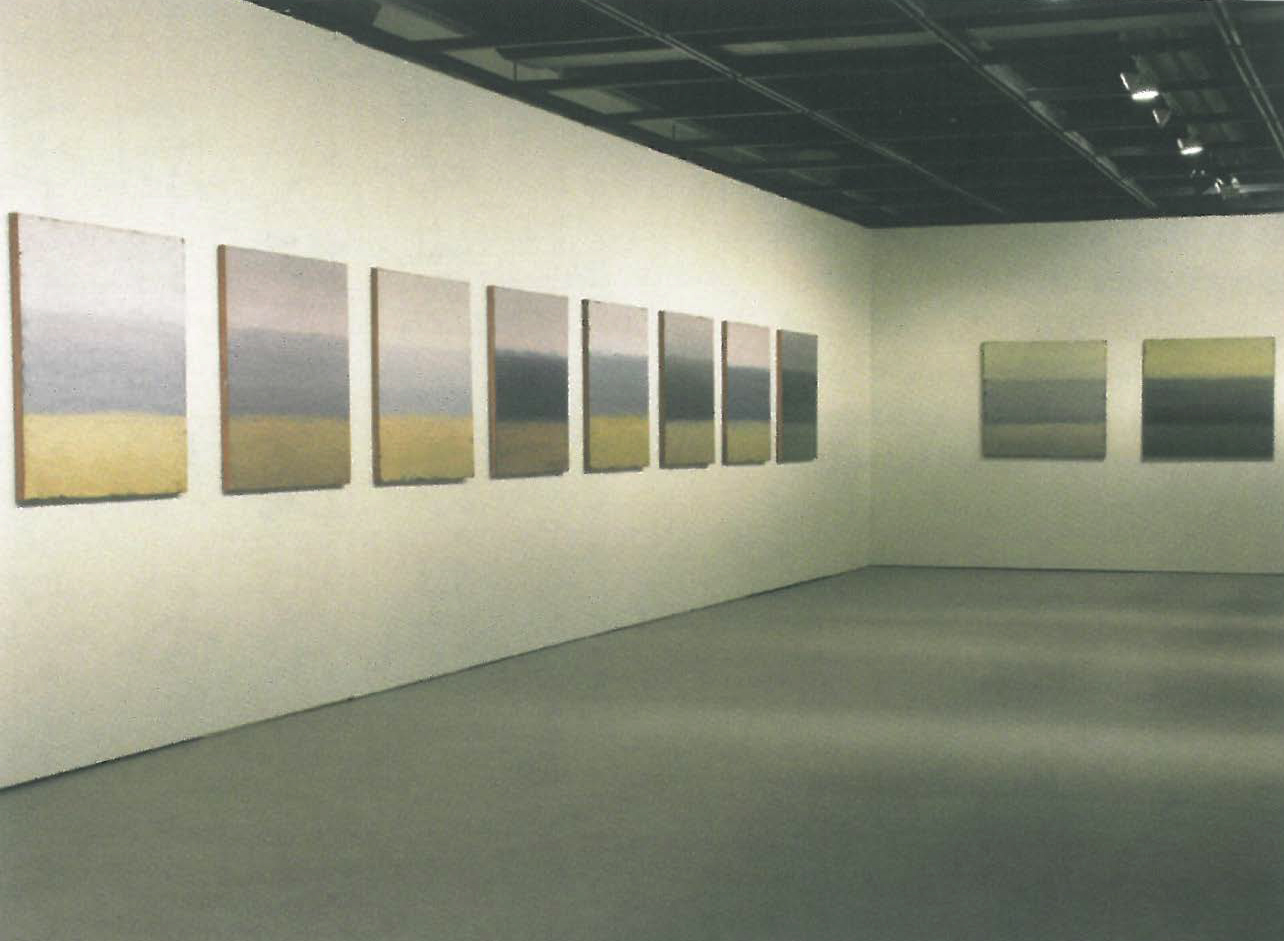
In his latest body of work, Philip Wolfhagen has come in from the cold of the Bass Strait islands that produced the immense, forbidding, archipelago (2002) and is back in his studio in northern Tasmania. The outcome is The Inner Edge, a series of works that partner those shown recently in Noctiluca at the Bett Gallery in Hobart. Travelling the Midland Highway from Hobart to Launceston, on a late afternoon in early winter, is to travel from Noctiluca to The Inner Edge, from pastoral to Earth. Past Campbell Town the great shallow dish of the Midlands spreads out, part rimmed by the strata of the Great Western Tiers, holding the immense sheet of sky above the grasslands and rough belts of trees. Gradually the landscape detail mists away, the atmosphere refracted and modulated as the light retreats and dims, leaving only a trace of the Tiers, The Inner Edge, to divide heaven and earth, human from void.
In Noctiluca, which finished at Bett's in mid-June, Wolfhagen assured his audience that the landscape, although somewhat reduced in detail was still present, not only describable but legible. It was almost a relief to read in that catalogue Wolfhagen recognizing his debt to Constable: in more than one of the paintings in the series – for example, Evening Light No 4 (2004), the proportions of foreground and ridge to sky in Constable's Hampstead Heath works were mirrored almost perfectly, as were the almost pitch-like quality of some of the darker areas of paint. There is less recognizable historicizing in The Inner Edge.
In the cool white box of the Academy Gallery, the sixteen large works that make up one series within The Inner Edge are hung to form a tonal narrative of the changing light across the land. Together the images form a tripartite ribbon of information along which the viewer can travel. Within every image, a strong tonal relationship exists between each strip. A series of twelve smaller images have their story interrupted in that their arrangement is less obviously sequential, becoming moments of first thoughts rather than the longer contemplations offered by the group of larger canvases. The works are numbered, and share the title Semaphore. Certainly they are flag-like, all having three equal bands of colour running across the surface, but what they might signal is no longer wholly indebted to the language of landscape, but has become paint. The line of semaphores follows the tonal observations of the Midlands landscape made by Wolfhagen on daily trips to his studio. The works are a narrative of this trip and others, of the delirium of childhood carsickness and the adult fall into aestheticisation, linked together, as Wolfhagen indicates in his catalogue statement, by 'the metaphysical escarpment the Tiers cast in my psyche.'
Reading along The Inner Edge, even the proportions of what might be read as earth/ Tiers/sky are not reliant on an update of Constable's meteorological obsessions. The big sky is no longer a subject, but is complexified in a changing relationship to the earth, a band of visual experience. Here is Noctiluca reduced but not diminished. The rough-painted edges of the canvases that had made their appearance in that series has now been joined by a far more concentrated build up and abrasion of paint that pulls the groups of works together while it creates ambiguities and tensions within each individual canvas. The paint pulls towards the centre of interest, resisting the smooth narrative of hue and tone. Freed from the ritual representation of the landscape, the paint itself has become of interest. There is no other way of getting into these works individually, but there is the constant invitation to travel around the gallery space, both visually and physically. To travel the space is to run an eye around a rim, an Inner Edge that has the potentiality, the potency, of a further unknown space beyond. For the viewer, then, it is a choice of one long almost grounded moment or diaries of momentary experiences of a named but not defined space.
What is it about Tasmania that has induced artists to produce works with such adherence to the circularity of form of both earth and island? From Henry Hellyer's sketch of the view from Mt Valentine's Peak made on 15 February 1827, though to Bea Maddock's Terra Spiritus (1993-98), artists working in Tasmania have led their audiences on circumnavigations both physical and of the mind. Philip Wolfhagen, in this exhibition, circles the land as it circles him, content to be captured by its resonance that is one of his own experience.
The Inner Edge forms the basis of a solo exhibition at Sherman Galleries, Sydney, in July 2004.












